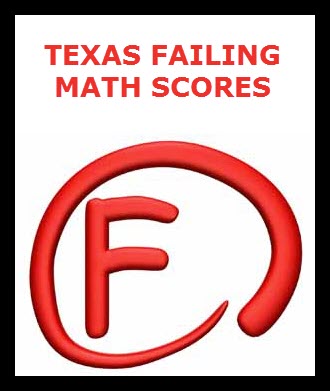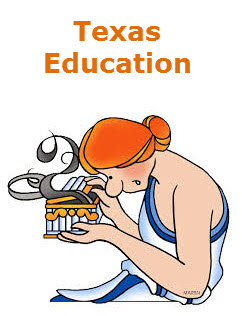COMMON CORE MATH IN TEXAS? WHY TEXAS SCHOOLS SHOULD NOT USE CENTRALIZED GOVERNMENT CONTROL
Part 1 of the Series: Common Core Math War Rages in Texas
By Carole Hornsby Haynes, Ph.D.
Texas Insider Report: AUSTIN, Texas – In 2012 the Texas State Board of Education approved new math curriculum standards. Since then, chaos has erupted over these standards.
Randy Houchins and John Pendergraff, two mechanical engineers with children in Texas public schools, are very adamant that the Common Core process standards have managed to creep into their children’s math materials and STAAR tests.
Since Common Core is illegal in Texas, how could this happen?
And why shouldn’t Texas schools use Common Core math if they prefer? This series seeks an answer to these questions.
One of the national experts for the Texas math curriculum standards review was Dr. James Milgram, who has been highly critical of Common Core math. Milgram, professor of mathematics emeritus, Stanford University who was a member of Common Core’s Validation Committee and the only content expert in mathematics for the standards, refused to approve the standards.
Core Math Standards, according to Milgram, have very low expectations.
Milgram compares U.S. requirements with those in high achieving countries where students study Algebra I and the first semester of Geometry in Grades 6, 7 or 8 and by Grade 9 will have completed much of our Algebra II content and Geometry at a more sophisticated level than U.S. students. Students from high achieving countries are expected to complete a standard Calculus course to graduate from high school with over 90% of the populations typically being high school graduates.
By the end of 7th Grade, Core Standards are roughly two years behind. Common Core math includes “most — but not all — of Algebra I and about 50% of regular Algebra II, as well a ‘strange’ Geometry course,” says Milgram.
Milgram notes that Calculus is required for most critical areas such as engineering, medicine, computer science, economics and the sciences. (Milgram & Stotsky, “Lowering the Bar: How Common Core Math Fails to Prepare High School Students for STEM,”)
Professor Jason Zimba, lead writer of Common Core’s mathematics standards, has admitted that Common Core prepares students only for a two-year college. When asked whether Common Core prepares students for a STEM career, Zimba replied, “Not only not for STEM, it’s also not for selective colleges.” (Emphasis added)
Why did writers of Common Core Math decide only Algebra I is essential?
The answer to this question lies buried in the history of the birthing of Common Core – which is linked directly to Hillary Clinton.
In 1989, the National Center for Education and the Economy formed a commission under the U.S. Department of Labor. The NCEE is a highly connected “nonprofit” with a role akin to that of the Bill & Melinda Gates Foundation’s funding of Common Core.
Along with other key players, the commission included Hillary Rodham Clinton, NCEE leader Marc Tucker, Michael Cohen (key in Clinton’s Goals 2000 and later Common Core), and HillaryCore architect, Ira Magaziner.
On November 11, 1991, Marc Tucker sent the famous “Dear Hillary” letter, laying out a master plan for the Clinton administration to seize the entire U.S. educational system to serve national economic planning of the workforce.
Tucker’s plan is “to remold the entire American system” into “a seamless web that literally extends from cradle to grave and is the same system for everyone,” coordinated by “a system of labor market boards at the local, state and federal levels” where curriculum and “job matching” will be handled by counselors “accessing the integrated computer-based program.”
This ambitious plan does not address teaching children how to read, write, or calculate. Instead, public schools will change from teaching academic basics and knowledge to training for the global economy in jobs selected by workforce boards – training for American collectivism.
Tucker told Hillary that “radical changes in attitudes, values, and beliefs are required.” He said the way to overcome this resistance was “consensus building” among governors and Congress.
It was this same game plan, along with many of the same people and organizations, of Common Core.
Tucker’s comprehensive plan was implemented in three laws signed by President Bill Clinton in 1994:
1. The Goals 2000 Act
2. The School-to-Work Act, and
3. The Reauthorized Elementary & Secondary Education Act.
These three laws create the following mechanisms to restructure public schools:
· All elected officials on school boards and in state legislatures would be bypassed by making federal funds flow to the Governor and his appointees on workforce development boards.
·
· A computer database, a.k.a. “a labor market information system,” would be established so school personnel could compile and track personal information for each student and his family from birth or preschool onward, identified by the child’s social security number: academic, medical, mental, psychological, behavioral, and interrogations by counselors. The school, the government, and future employers would have access to the computerized data.
·
· Centralized government control would come through “national standards” and “national testing” that take over tests, assessments, school honors and rewards, financial aid, and the Certificate of Initial Mastery (CIM), designed to replace the high school diploma.
Tucker’s plan uses the German system which trains children for specific jobs to serve the workforce and the global economy instead of educating them to make their own choices. Marc Tucker’s plan prepares public school students for the workforce only – our “worker bees.”
This education structure that Hillary helped to design is the forerunner of Common Core. It was Hillary who sold the idea of national standards to Obama. Common Core fulfills some of the education agenda that she failed to get passed.
In 2013 Marc Tucker discussed the key findings of the NCEE study about college and career readiness. Of the students in U.S. colleges, 45 percent attend community colleges which provide not only most of the nation’s vocational education, but are also a main pathway to four-year colleges. Algebra II is not a prerequisite of community colleges so NCEE recommended that schools abandon the requirement that all high school students be required to take Algebra II.
Further, Algebra I should be delayed until Grade 10. Of critical importance is that this delay precludes high school students being able to take Calculus.
Also of critical importance, says Dr. Milgram, is that,
“This [NCEE] report does not consider the question of which four-year colleges will accept just one year (Algebra I) of high school math. Virtually all the higher rated ones…require at least four years.
“The study ignores what will happen if the community college student transfers to a four-year college.”
In my next posting, I’ll explore what happened during the math TEKS review. Dr. Milgram, Niki Hayes, Randy Houchins and many others have candidly spoken with me about the events surrounding this curriculum review and how things went awry.
Follow Carole Hornsby Haynes at www.drcarolehhaynes.com













